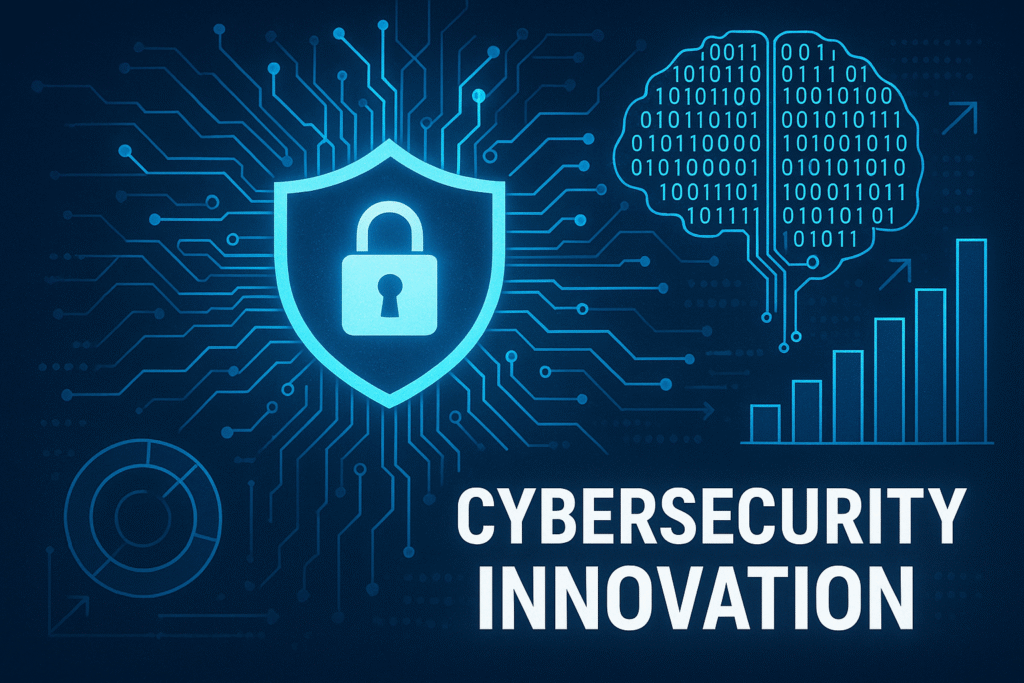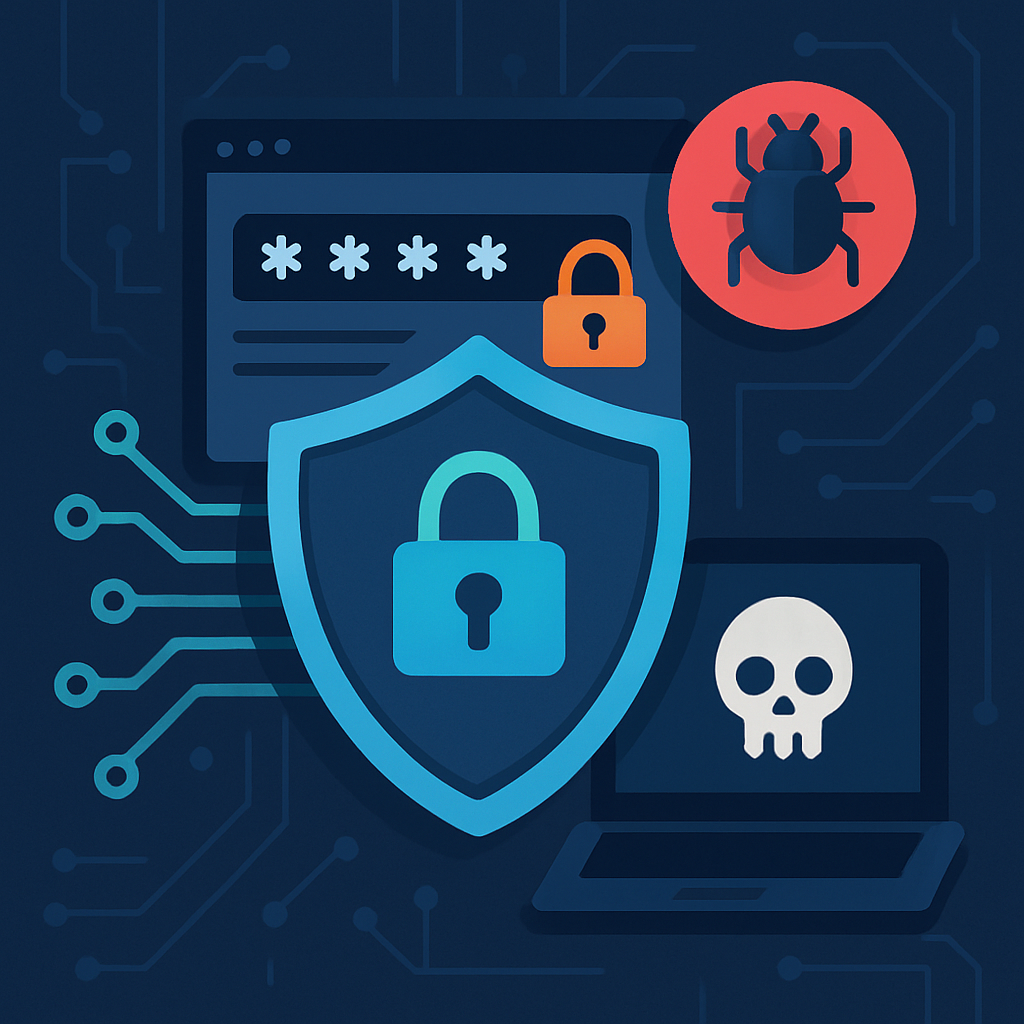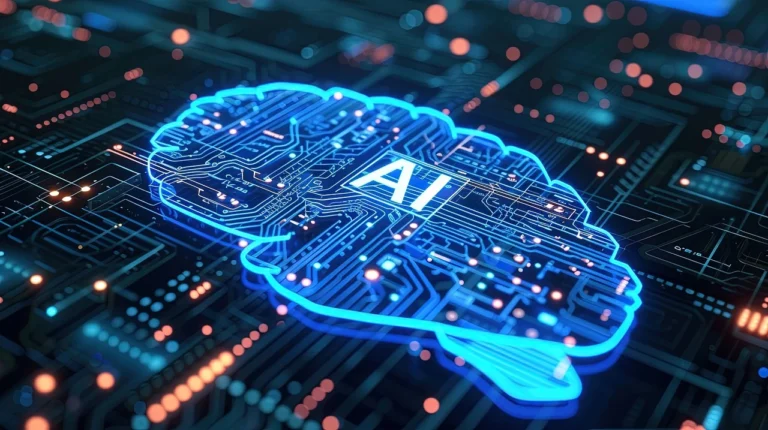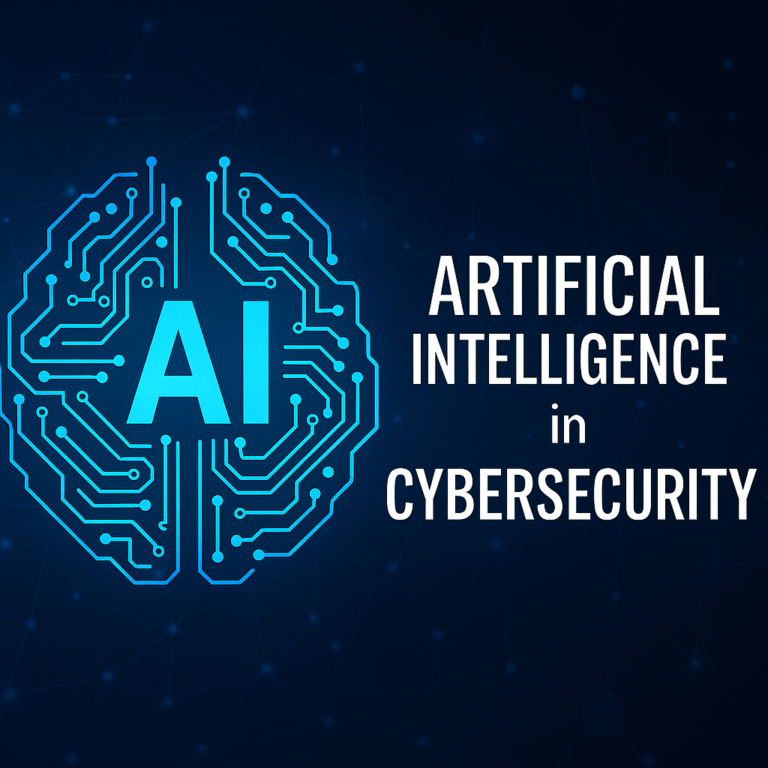Cybersecurity Ultimate Innovations in the Face of Growing Threats
Introduction: The Escalating Importance of Cybersecurity
Cybersecurity Innovations
Summary:
As our world becomes increasingly digital, cybersecurity has transformed from a back-office IT concern to a boardroom-level priority. This article explores today’s most pressing cyber threats—from ransomware and supply chain attacks to IoT vulnerabilities—while highlighting innovative defenses such as AI-driven detection, blockchain security, and zero-trust architecture. It also examines the global push toward stronger data protection regulations and offers best practices to help organizations stay secure in a rapidly evolving digital landscape.
In our increasingly digitized world, where everything from financial systems and health records to supply chains and home security relies on interconnected digital platforms, cybersecurity has never been more important. The shift to digital has brought unprecedented convenience and opportunity—but it has also created new vulnerabilities and a thriving ecosystem for cybercriminals. Cybersecurity, once an afterthought for many organizations, is now a cornerstone of digital strategy.
Today’s threat landscape is sophisticated and rapidly evolving. The old image of a hacker in a hoodie working solo from a dark room is outdated. Modern cybercriminals operate within complex, well-funded syndicates. Some are backed by nation-states, while others run like full-fledged businesses offering ransomware-as-a-service or exploiting supply chain weaknesses to reach their targets. Meanwhile, the explosion of Internet of Things (IoT) devices, remote work, and cloud computing has dramatically expanded the attack surface.

For more detailed guidance on defending against ransomware, visit the FBI’s Ransomware Guidance.
This article explores the current state of cybersecurity threats and innovations. We’ll examine the rise of ransomware, the dangers lurking in digital supply chains, and the vulnerability of IoT devices. We’ll also look at cutting-edge technologies like AI-driven threat detection, blockchain security, and zero-trust architectures. Finally, we’ll delve into the growing importance of data protection regulations and what organizations can do to prepare for the future.
Understanding the Modern Cyber Threat Landscape
Ransomware has become one of the most destructive cyber threats in recent memory. It works by encrypting a victim’s files or locking access to their systems and demanding a ransom—usually in cryptocurrency—to restore them. Over the past few years, ransomware attacks have become far more common, and their impacts have grown increasingly severe. Cybercrime groups now function like commercial enterprises, selling or leasing their malicious tools to others through ransomware-as-a-service platforms. These tools are often very easy to use, which means that even individuals with limited technical skills can launch devastating attacks.
The tactics used by ransomware attackers have also become more aggressive. In the past, attackers would simply lock files and ask for payment. Today, they also threaten to release sensitive data publicly if the ransom is not paid. Some attackers even go further, threatening business partners or customers to apply pressure. The selection of targets has also evolved. Rather than going after small businesses or individual users, attackers are now focusing on critical infrastructure like hospitals, energy pipelines, and public service institutions. These targets are more likely to pay quickly due to the catastrophic consequences of downtime.
The financial consequences of ransomware are severe. Beyond the ransom itself, organizations must contend with extended downtime, potential data loss, customer distrust, and hefty regulatory fines. It is estimated that ransomware costs have surged into the billions globally, prompting businesses and governments to make ransomware defense a key priority in their cybersecurity planning.
Another significant threat vector is the supply chain attack, which involves targeting an organization through its third-party vendors or service providers. This kind of attack gained global attention with the SolarWinds Orion breach in 2020. In that case, attackers managed to insert malicious code into a routine software update. The tainted update was then distributed to thousands of organizations, including major U.S. government agencies and leading corporations. This breach highlighted how attackers could bypass traditional defenses by infiltrating trusted software providers.
Supply chains are especially vulnerable because they often involve many different organizations, each with its own cybersecurity practices. Some of these vendors might have weaker security, creating easy entry points for attackers. Additionally, businesses often grant their partners and suppliers significant access to internal systems, which can be exploited if those third parties are compromised. This interconnected nature of modern business ecosystems means that a single breach can cascade and affect many entities downstream.
The explosion of Internet of Things (IoT) devices has also introduced a massive cybersecurity challenge. These devices—ranging from smart thermostats and wearable health monitors to industrial machinery and connected vehicles—create a vast network of endpoints. Many of these devices were designed with convenience, not security, in mind. They often come with default passwords that users don’t change, and their software is rarely updated, making them easy targets.
Due to their limited computing capabilities, traditional security software often doesn’t work on IoT devices. This leaves them vulnerable to being hijacked and used in attacks. One of the most infamous examples of this was the Mirai botnet attack, which compromised thousands of IoT devices to launch massive distributed denial-of-service attacks. These kinds of events demonstrate how weak points in everyday technology can be turned into powerful weapons by cybercriminals.

Cutting-Edge Cybersecurity Innovations
To counter the evolving threat landscape, cybersecurity experts and organizations are turning to innovative technologies that go beyond traditional defenses. Artificial Intelligence (AI) and Machine Learning (ML) are leading the charge in transforming how cybersecurity is approached. Traditional systems often rely on known patterns or signatures to detect threats, which makes them ineffective against new or rapidly evolving attacks. AI changes this dynamic by learning from vast amounts of data and identifying anomalies that could indicate an attack, even if it’s one that has never been seen before.
The use of AI in cybersecurity allows for real-time monitoring of network activity and rapid detection of potential breaches. These systems can analyze millions of data points, identify suspicious behaviors, and initiate automated responses to neutralize threats before they spread. This is especially valuable in detecting zero-day exploits, which are attacks that exploit previously unknown vulnerabilities. Companies such as Darktrace, SentinelOne, and CrowdStrike are pioneers in offering AI-powered security solutions that continuously evolve to keep up with the latest threats.
Blockchain technology is another promising innovation in the cybersecurity space. Known primarily for powering cryptocurrencies, blockchain offers a decentralized and tamper-proof system that can be leveraged to secure data and verify transactions. In cybersecurity, blockchain can be used to maintain immutable logs of activity, which is critical for audits and forensic investigations. These logs cannot be altered without leaving evidence of tampering, making them highly reliable.
Blockchain also enhances digital identity systems. Instead of relying on centralized databases that can be breached, decentralized identifiers allow users to control their own credentials. This approach reduces the risk of identity theft and unauthorized access. Moreover, blockchain can improve transparency and traceability in supply chains by tracking every component or software update back to its source. This can help prevent the kind of supply chain attacks mentioned earlier.
As organizations move more of their operations to the cloud and adopt remote work models, the limitations of perimeter-based security become evident. This is where Zero-Trust Architecture (ZTA) comes into play. Zero-trust is a framework that assumes no user or device should be trusted by default, even if it is inside the network. Every request for access is verified thoroughly, and users are only given the minimum level of access required to perform their tasks.
Zero-trust strategies involve continuous authentication, strict access controls, and segmentation of networks to prevent attackers from moving laterally if they gain a foothold. Google was an early adopter of zero-trust principles through its BeyondCorp initiative. Today, zero-trust is seen as essential for securing modern, distributed environments and is being implemented by organizations across all sectors.
Threat intelligence platforms are another vital component of modern cybersecurity. These platforms gather data from numerous sources, including security vendors, government agencies, and open-source intelligence, to identify emerging threats. By analyzing patterns and identifying indicators of compromise, these platforms help organizations anticipate and defend against attacks before they occur. When integrated with other security systems like SIEM (Security Information and Event Management) and SOAR (Security Orchestration, Automation, and Response), threat intelligence becomes a powerful tool for proactive defense.
The Rise of Global Data Protection Laws
As cyber threats become more pervasive, governments worldwide are responding with stronger data protection regulations. The European Union’s General Data Protection Regulation (GDPR), enacted in 2018, set a new standard for data privacy. It gives individuals greater control over their personal data and imposes strict requirements on how organizations collect, store, and use that data. Non-compliance can lead to severe fines, which has encouraged many companies to prioritize data protection.

In the United States, California has led the way with its Consumer Privacy Act (CCPA) and the more recent California Privacy Rights Act (CPRA). These laws grant residents the right to know what data is being collected about them, to opt out of data sales, and to request deletion of their personal information. They also impose new responsibilities on businesses, such as providing clear privacy notices and implementing reasonable security measures.
Other countries are following suit. Brazil’s LGPD, India’s Digital Personal Data Protection Act, and China’s Personal Information Protection Law all reflect a global trend toward stronger privacy protections. These laws vary in their specifics but share a common goal: to protect citizens’ data and hold organizations accountable for its misuse. For multinational businesses, navigating this complex regulatory landscape is both a challenge and an opportunity to build trust with customers through responsible data stewardship.
Best Practices for Organizational Cybersecurity
While technology plays a crucial role in defending against cyber threats, it is not a silver bullet. A truly effective cybersecurity strategy also includes strong governance, trained personnel, and a culture of security awareness. Human error remains one of the most common causes of breaches. Employees need to be regularly trained on best practices, such as recognizing phishing attempts, using strong passwords, and following proper protocols for handling sensitive information.
Organizations should also implement continuous monitoring of their systems. This allows them to detect unusual activity quickly and respond before a breach can escalate. Regular risk assessments help identify potential vulnerabilities and guide decisions about where to invest in defenses. This proactive approach is far more effective than reacting after the fact.
Another key principle is defense in depth, which involves layering multiple security measures to create a robust barrier against attacks. If one layer is breached, others still stand in the way. This might include a combination of firewalls, intrusion detection systems, endpoint security tools, and cloud security controls. The goal is to ensure that even if one part of the system is compromised, the attacker cannot gain full access.
A Future Defined by Resilience and Innovation
Cybersecurity has become one of the defining challenges of our time. As technology continues to advance, so too do the tactics and tools used by cybercriminals. However, the good news is that defenders are not standing still. Innovations like AI, blockchain, zero-trust architectures, and advanced threat intelligence are enabling organizations to detect and prevent attacks more effectively than ever before.
At the same time, regulatory frameworks are raising the bar for data protection, forcing organizations to take privacy seriously. Those that embrace these changes and prioritize cybersecurity at every level will be better positioned to succeed in an increasingly digital world.
Ultimately, cybersecurity is not just a technical issue—it is a matter of trust, reputation, and resilience. The future belongs to those who can innovate while staying secure, adapt while staying vigilant, and grow while safeguarding the data and systems that power our modern lives.

Resources
For readers eager to deepen their understanding of how technology is transforming our world and impacting cybersecurity, we invite you to also visit our detailed exploration on Technology and How It Has Changed the World. Staying informed about these advancements is essential for staying ahead in the digital age.






